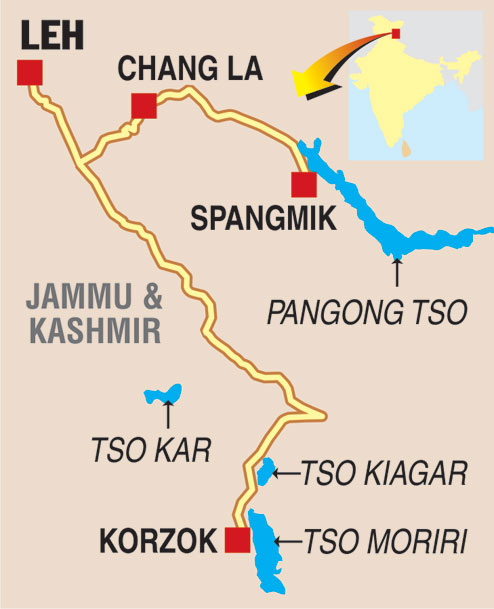Ladakh’s Tso Kar Wetland Complex- India’s 42nd Ramsar site
India recently added the Tso Kar Wetland Complex as its forty-second Ramsar site. This is the second Ramsar site in the Union Territory of Ladakh.
About Tso Kar
The Tso Kar Basin is located in a high-altitude wetland complex. It consists of two main waterbodies Startsapuk Tso and Tso Kar. The Startsapuk Tso is a freshwater lake of 438 hectares to the south. The Tso Kar lake is a hypersaline lake of 1800 hectares.
Tso Kar Basin is an A1 Category Important Bird Area according to the Bird Life International. It is a key staging site in the Central Asian Flyway. Also, the site is the most important breeding areas of the Black necked Cranes in India.
It is also called Tsho Kar lake. It is a fluctuating Salt Lake located in Rupushu plateau.
What is Important Bird Area?
The Important Bird Area is an area identified internationally by a set of criteria for the conservation of bird population. It was developed by Bird Life International. There are 12,000 Important Bird Areas worldwide.
Global Important Bird Area Criteria
Based on the criteria, the Global Important Bird Areas are classified as follows:
- A1 Category: Globally Threatened Species. The sites under this category holds bird population that are categorised as Critically Endangered, Endangered or Vulnerable by the IUCN Red List of Threatened Species.
- A2 Category: Restricted Range species
- A3: Biome Restricted Species
- A4: Congregations
Central Asian Flyway
The Central Asian Flyway covers continental area of Eurasia between Arctic Ocean and Indian Ocean. It covers northern most breeding grounds in Siberia, non-breeding winter grounds in India, West Asia, Maldives and British Indian Ocean Territories.
Tsomoriri
Tsomoriri was included as a Ramsar site in 2002. It is a brackish lake that lies at a height of 4,595 metres above the sea level. This site is the only breeding ground of the black-necked cranes outside China. These birds are endangered.
Month: Current Affairs - December, 2020


